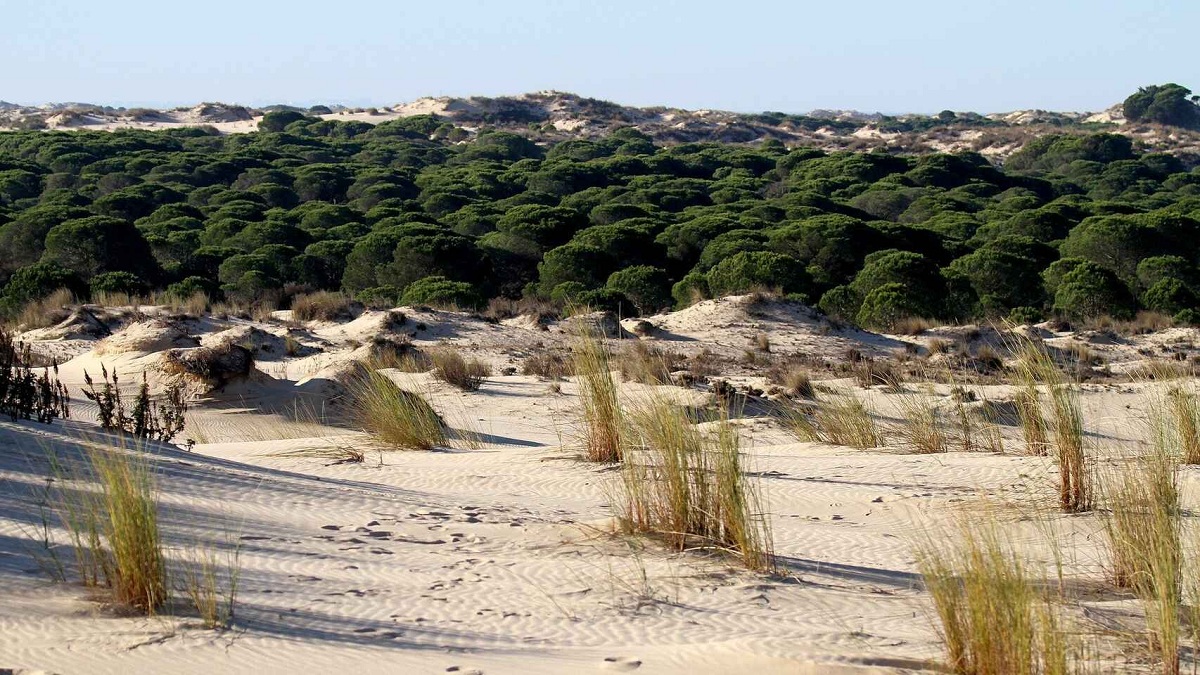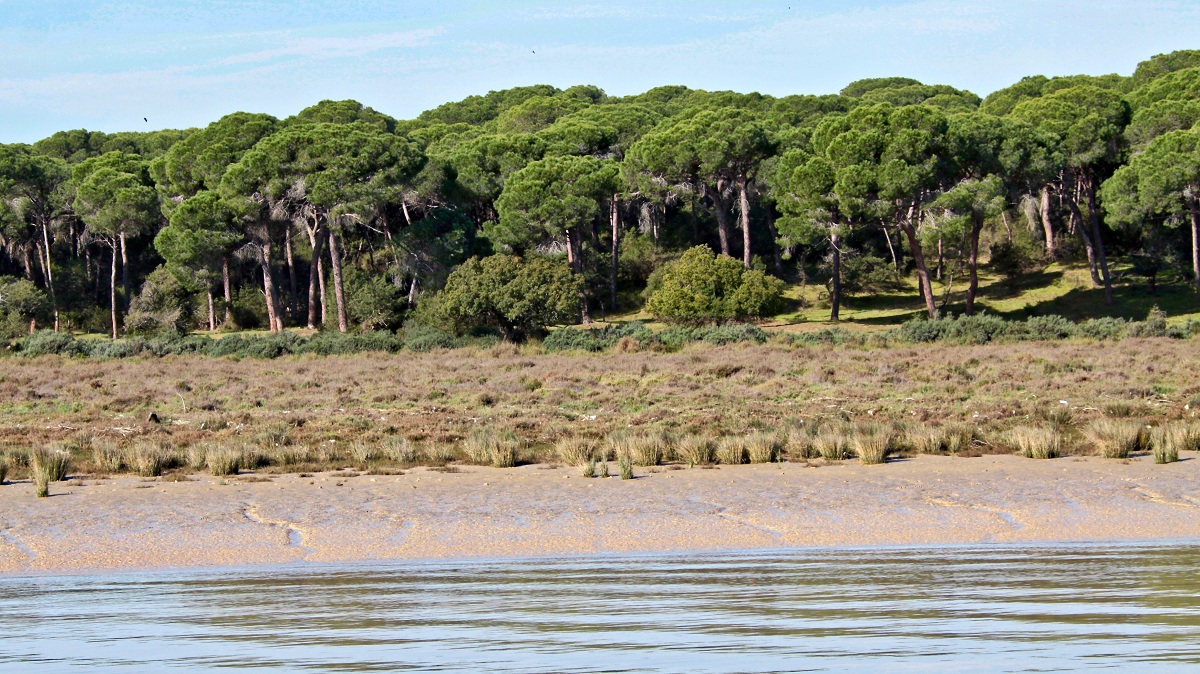
The Doñana National Park is one of the most important in all of Spain since it is home to a large amount of biodiversity and highly important habitats. The ecosystems of Doñana It presents in a singularity that is due to the great diversity of the landscapes and species that it houses. In addition to the marshes, there are some ecosystems such as beaches, mobile dunes and corrals.
In this article we are going to tell you everything you need to know about the Doñana ecosystems, their characteristics and importance.
Uniqueness of the Doñana ecosystems

The uniqueness of Doñana lies in the diversity of landscapes and species that it has. In addition to the ecosystem of the marshes, which is characterized by a rich biodiversity and an ever-changing appearance. There are also a number of special ecosystems gathered here: beaches, flowing dunes, and corrals. This mountain has juniper forests, cork oak forests and pine forests are locals called "protected areas". In addition, it has numerous lagoons that are scattered between the vegetation and the transition zone that connects and separates them.
The marshes is the largest ecosystem in the extension of the park, covering around 27,000 hectares, what gives this space a different personality. It is a humid area of extraordinary importance as a place of passage, breeding and wintering of European and African birds. It is flooded thanks to the contribution of some streams and rainwater, which makes it present a very marked seasonality.
In autumn, the first rains flood the marshes. In winter, as the rains increase, the marshes gradually submerge. It is in spring when the surface of the water is covered with buttercup flowers and large areas of castanets and bayinkos. In summer, the marshes are a broken, dusty clay desert. Although there are no obvious reliefs, the small slopes provide the conditions for the existence of various habitats in the swamp ecosystem.
The sweet marsh is the one with the greatest depth and, therefore, concentrates in years of normal rainfall more water and for a longer time, which reduces its salinity and can grow a marsh vegetation of castanet and bayunco. The salt marsh or almajo marsh is the one with slightly higher areas where the contribution of fresh water is lower and the salinity of the soil higher. The dominant plants are almajo, salted almajo and sweet almajo.
Parts of the Doñana ecosystems

The gulf that rises at the mouth of the Guadalquivir is crossed by a small ditch or temporarily diverted from the main channel. Pipes used to be channels for rivers, tributaries and tributaries. Today, they are covered with reeds and there are carps, frogs and gallipats hidden in the reeds.
The veins and vetones are above-average land, forming small islands that are rarely submerged. They are places of rest and refuge during the Great Flood, and also a very important nesting area for birds such as storks.
The eyes of the marsh are a spring. It is like a natural source of fresh water stored in the deep. They appear near the edge of swamps and, for many animals, become a resource to quench thirst during drought or summer.
Beaches and dunes

Strong coastal dynamics constantly change the contours of the beach. In the beach area furthest from the water, the vegetation clings to the unstable and dry soil, forming small obstacles that will become the origin of the living dunes. On the seabed next to the beach appear meadows of Cymodocea nodosa, Zostera noltii, and abundant lamellibranchs and gastropods in the soft bottoms.
Next to the beach we find the first corrals, where there are groves of vegetation that are trapped between dunes. These corrals are the closest to the sea and are generally occupied by various bushes such as they are the carnations and the evergreens. Further inland we already have pine groves that are capable of colonizing the corral, occasionally being small lagoons temporarily with reed beds. It is in the mobile dunes where the coastal junipers appear.
The protected area or shrub area represents the intermediate stage of the Mediterranean forest terminal and the mature ecosystem. View from the landscape, the reserve does not change much throughout the year and it is difficult to see animals. Although it shows elements that are very interesting, such as large ungulates, deer and wild boar, and large carnivores such as the Iberian lynx and the Iberian Imperial Eagle.
The true
The contact between the shrubs and the marshes of the reserve is through a band 200 to 1500 m wide called "vera", which corresponds to the intertwined zone of enormous ecological wealth. It is the boundary between clay and sand. In this narrow area, plant and animal species from the two environments overlap and the humidity filtered by the sand appears, which favors the growth of reeds and grasslands.
At a lower level, grasslands develop on sandy and dry substrates. The herb is sterile, mainly Rumex bucephalophorus, which gives it a distinctive red color. At an even lower level, but closer to the marsh, a pasture rich in plant species develops. The cork oaks in the bushes near the coast, vestiges of the ancient forest, give this enclave a special character as it is the habitat of large groups of birds.
The importance of protecting this area and classifying it as a protected natural space becomes imperative when it exists such amount of biodiversity and unique ecosystems capable of harboring species of all kinds. We must understand that the ecosystems of Doñana have an ecological balance that is quite vulnerable to the environmental impacts produced by the different economic activities of human beings. This means that it seems to take special care with the recreational and economic activities that are allowed to be carried out in this environment. As you can see, the ecosystems of Doñana have great ecological value and must be protected.
I hope that with this information you can learn more about the Doñana ecosystems, their characteristics and importance.